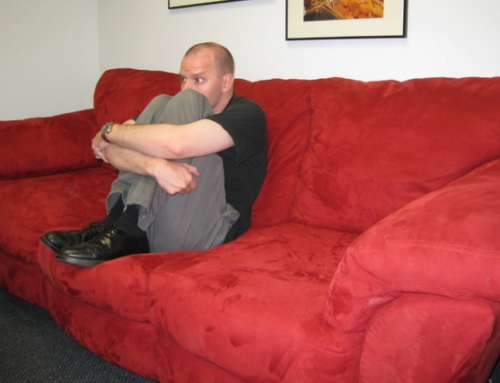We all have ways we are unique and different from others, and all have areas of relative weakness. However, some of us experience, and may struggle with, more intrusive differences, with differences that are more obvious to ourselves and others, and with differences that we develop that are inconsistent with how we see ourselves. So, a very bright teenager who has struggled with attention in school has a psycho-educational evaluation and learns that she has learning differences of which she was not previously aware. She now finds herself considering how those characteristics impact her work and her life. Further, she is challenged with finding ways to compensate for her newly identified difficulties. In another example, a young adult woman who is working on issues of “failure to launch” has come to identify ways her anxiety contributes to her situation. In order to manage the impact of her anxiety, she is reluctantly coming to some acceptance of anxiety as a condition that is part of her life experience.
There is the perception that people are more accepting of those with differences now than in the past. People who look different are said to be more accepted; we see people with a variety of hair colors, piercings and body art. Those with physical disabilities or cognitive impairments or physical deformities are also more likely to be accepted by others. For instance, we see characters on television in wheel chairs or who are deaf. However, individuals may not see themselves as one of the “different” ones. It often comes as a surprise to people, parents and children, adults and adolescents, that they too have some characteristic that differentiates them not only from others, but from who they expected themselves to be.
Accepting our own differences can have many layers. Many times the difference is not new to the individual; they knew about or sensed that something was different. The teen with social anxiety has known that it is difficult for him to interact with peers or attend social events, but may not have understood why. The teen whose evaluation identified specific deficits had known school was harder than she thought it should be. Yet, having the difficulty identified and labeled has its own impact. The labeling makes the difference feel more real for some, which can then lead to a feeling that it needs to be addressed or at least acknowledged.
Sometimes the difference is brought to the individual’s attention by others, e.g., when others stare or comment on a physical characteristic or tease them (saying, for example, “Why can’t you do this?” “Why don’t you understand this?”). At those times the person might feel uncomfortable about the attention or embarrassed at the teasing.
An important issue is the change in expectations for oneself. A teenage boy who was intent on playing soccer through college may be devastated by a career ending injury. When that injury leads to an obvious long-term limp, it becomes even more difficult to accept. A young adult female with an eating disorder may strive for perfection in her thinness only to discover, as her treatment proceeds, that she is, in fact, in the throws of a medical illness that has taken over her life.
Family members may also struggle with the difference in their loved one. They may have a difficult time accepting the situation when it is newly diagnosed or labeled. Their reaction contributes to the patient’s own acceptance of difference. When a 3 year old was diagnosed with celiac disease, the family initially became very upset and worried about the impact of the disease on his life and ways it might limit him socially. After some period of adjustment, they were able to accept the diagnosis and help him move toward a healthy eating regimen. When psycho-educational testing identifies a learning difference, family members may struggle with accepting that finding and the implications for the future.
In the ideal situation, the patient and the family come to a level of acceptance that allows for accommodation to the problem, but also values the person for who they are, apart from the difference. That acceptance may at times be challenged, as when a person in a wheelchair is particularly limited or unable to participate in an activity or when the emotional energy to deal with the situation wanes. At those times self-esteem may be particularly low, and the patient may feel sorry for themselves and their situation. However, with support from others and internal strength, the patient can develop emotional resilience to return to a sense of self-acceptance and a feeling of self-worth.
Strategies to encourage self-acceptance may include creating a social network.It may be helpful for the person to be part of a network with others with a similar situation, in person as well as on-line, that allows them to experience support from others, a feeling that they are not alone, and normalization of their situation. People with a range of conditions, including medical diagnoses such as diabetes or celiac disease, or those with physical differences, may benefit from the social connection.
Another important strategy is to help the individual focus on their positive accomplishments and positive aspects of themselves. At times when self-esteem is low and the person is struggling with the difference, it is important to help them value themselves and their strengths. This may be particularly necessary when there are additional related treatments they must deal with or they are frustrated due to related limitations or have had their situation pointed out by others’ comments or teasing.
Other strategies include identifying ways to deal with anxiety and depression that may accompany the presence of the differences and using mindfulness and similar strategies to focus on the acceptance of the present. It is important for people to develop ways to accommodate to their difference. This accommodation may require support from professionals who are experienced working with the specific issue. Professionals might include a psychologist, a learning support tutor, an occupational therapist, a nutritionist, a speech therapist, a physical therapist, among others who can help to support necessary accommodations.
Sherry Pomerantz, Ph.D., is a psychologist in private practice, with offices in Bala Cynwyd and Rosemont. www.sherrypomerantz.com





